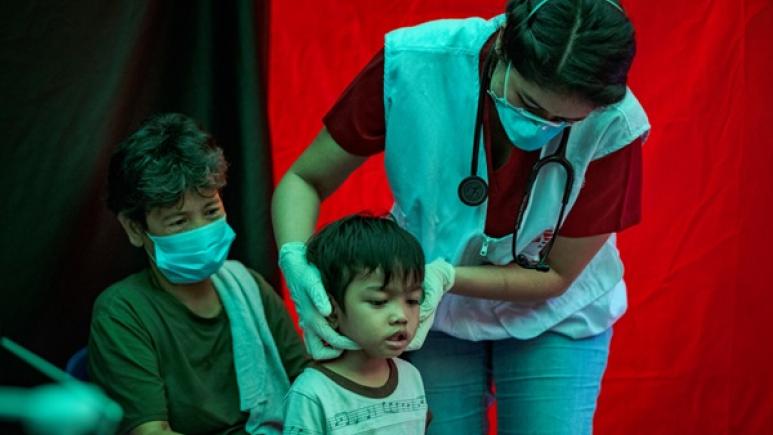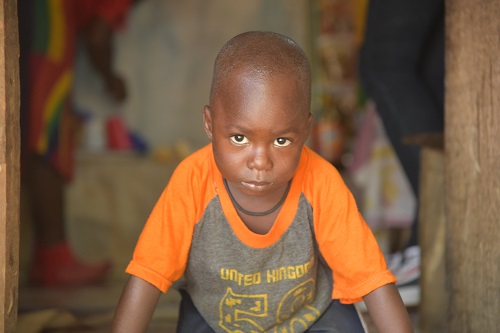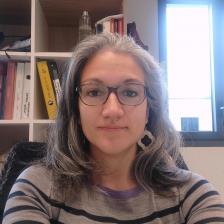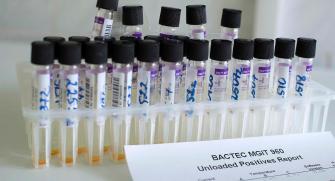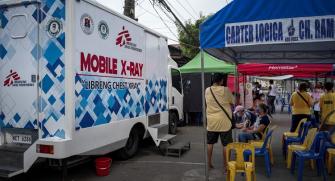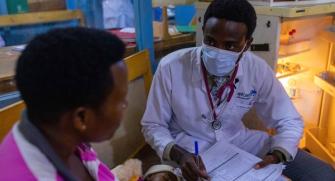Real-world evaluation of short-regimen treatment for Tuberculosis in Children.
Within four months, a child can complete a course of treatment for tuberculosis, and be considered cured. A recent clinical trial has shown that this shorter regimen is as effective in eligible children as the previous treatment regimen, which lasted six months. This 4-month treatment is now part of the new WHO recommendations for non-severe forms of the disease in children. The Philippines is amongst a growing number of countries incorporating WHO recommendations into national guidelines, yet one of the few to have started the roll out. This is a major breakthrough for the country which ranks 4th worldwide in tuberculosis incidence. In Tondo, Manila, Médecins Sans Frontières (MSF) is supporting Manila Health Department (MHD) to implement the new treatment guidelines.
New TB treatment a ‘big improvement’ for Filipino kids
In Districts 1 and 2 of Tondo, MSF and MHD have been working together on a TB project since 2022. As of January 2025, the project screened 38,465 people and diagnosed 1,826 patients with TB. Once people identified with TB are linked to care in the health center, the household contacts — including children — are investigated for TB. Children are also identified by health centers when they exhibit TB symptoms .
The new guidelines recommend an initial two-month phase using four anti-tuberculosis drugs - isoniazid (H), rifampicin (R), pyrazinamide (Z) and ethambutol (E), followed by a two-month maintenance phase using two drugs - isoniazid and rifampicin - for children and adolescents aged between three months and 16 years with non-severe pulmonary tuberculosis.
This 2HRZE/2HR four-month regimen will be an improvement on many levels. According to Richard H. Castro, MD, MPH, of the TB Prevention and Control Section of MHD, “For sure the shorter regimen will benefit the fight against TB in the City of Manila. Less time for the duration of treatment is equivalent to lesser logistics and commodities consumption, lesser disease burden for the family, and faster recovery from illness, especially in a depressed area like Tondo.”
For the child and their family, it means a better treatment experience: fewer health visits are needed, there are fewer days on treatment, less exposure to drugs and potentially less out-of-pocket expenses.
Castro adds, “This is an important step in making treatment easier and faster for our patients in the City of Manila. This new treatment will help more children and adolescents recover from TB in a shorter period, which is a big improvement."
The introduction of this new treatment regimen is part of the TACTiC (Test, Avoid, Cure TB in Children) project launched in 2023 by Médecins Sans Frontières, which aims to put into action the new WHO recommendations including the new treatment decision algorithms for TB in children in several African and Asian countries.
Real-life evaluation of the short treatment process
As part of the project, a study, conducted by Epicentre, Doctors Without Borders’ medical research and epidemiology satellite, and MHD, in partnership with the Institute of Child Health and Human Development (ICHHD) UP-NIH, aims to document the current rollout and assess feasibility and accessibility of the implementation in real-life of the new regimen in the Philippines and Uganda. This study will identify possible barriers and solutions to encourage further deployment of the shorter regimens for children with non-severe drug susceptible TB globally.
The study has two components, a quantitative and a qualitative one.
“The quantitative part aims to describe the proportion and clinical features of children eligible for the short course of treatment, as well as the proportion of those actually starting and continuing the 4-month treatment in the selected health facilities,” explains Valentina Carnimeo, epidemiologist at Epicentre.
The qualitative component consists of focus group discussions with community workers, key informants at the management and policy level, physicians in charge, and TB nurses -both before and after implementation- to evaluate the feasibility and acceptability of short-course treatment. Additionally, in-depth interviews will be conducted with caregivers of children and adolescents benefiting from the 4-month treatment.
This study will help identify obstacles and solutions that should then facilitate the deployment of short courses of treatment in other countries.
Valentina Carnimeo is an Epidemiologist at Epicentre.
She explains, “The TACTiC project plays a critical role in improving TB care for children. It supports and facilitates the integration of the latest WHO recommendations real-world settings, simplifying both diagnosis and treatment. Its impact extends beyond MSF projects to contexts less focused on tuberculosis and where tuberculosis is under-diagnosed. By pushing for these changes in national health systems, TACTiC is working to ensure more children survive and recover from TB with better, more accessible care.”
According to Josephine G. Aldaba, MD, Research Assistant Professor at UP-NIH ICHHD, “Conducting this study in the Philippines is an important step in identifying possible barriers in its implementation, particularly its acceptability among the parents of children with TB and among the healthcare workers and its effectiveness. This four-month regimen can potentially improve adherence to TB treatment.”
Dr. Castro adds, “Beyond providing the treatment itself, it's also crucial to understand how the community accept and support this change. By working together and paying attention to how the community responds, we can make sure this treatment reaches every child and adolescent who needs it.”
© Ezra Acayan







